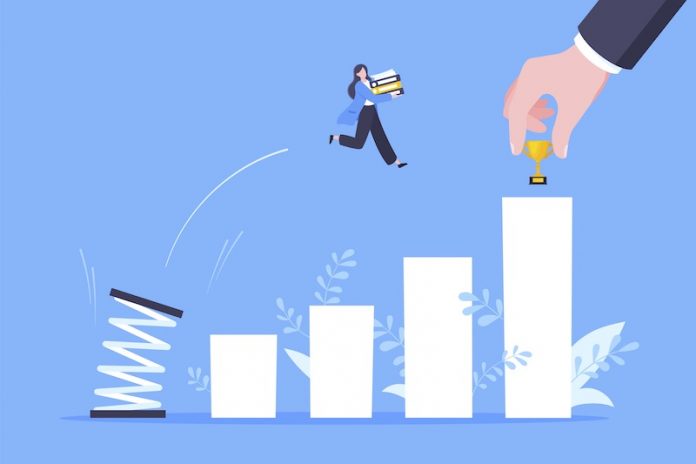Today, most sales enablement strategies aren’t comprehensive enough or leveraged to their full potential. While most companies focus on ensuring sales reps have content and content management tools to prepare for and present in sales meetings, it’s not enough to create a consistent customer journey.
In reality, sales enablement should equip the entire revenue team with the same streamlined processes, tools and interactive content for consistent and engaging buyer interactions that generate revenue – a process known as revenue enablement. That requires alignment across all client-facing teams, beginning with marketing.
B2B marketers are in a tough position. Capturing the attention of the increasingly elusive B2B buyer has become harder than ever as more sales interactions happen in digital channels, buying committees continue to grow and buyers conduct more self-guided research. Right now, most (63%) purchases involve more than four people. Salespeople only have five percent of a buyer’s time during B2B sales cycles, and most (60-80%) B2B buyers move through the customer journey on their own. This is in addition to dwindling customer budgets and competing business priorities.
And we can expect this trend of difficult-to-engage buyers to continue. By 2025, as much as 80% of sales interactions will occur digitally, leaving many marketers to wonder how they’ll keep up with changes in B2B buying behavior and close the ever-growing engagement gap with customers. The answer lies in building a full-scale, comprehensive sales enablement strategy. Here’s how:
Hire the Marketing Positions Required to Deliver
Revenue teams need to align people, processes and technologies to mobilize on a fully-functioning sales enablement strategy. While sales enablement technology is a critical part of the equation, it’s not enough on its own. Hire a sales enablement position to help your marketing team ramp up sales training, content creation, and get the right tech stack to measure, improve and scale processes.
Revamp Content for Digital Buyers
In remote sales cycles, prospects complete a majority of the sales process before they even talk to a sales rep. That means your content needs to do the legwork of capturing buyers’ attention, introducing your value, and motivating them to continue down the path to purchase. On top of that, most B2B customers crave the same ultra-personalized content experiences they get from B2C companies.
For your content to stack up, it has to present a visual and engaging story. Static, linear content won’t stand out – it has to be interactive while telling a compelling story. You can achieve this with animation, bite-sized formats and video context.
Make Content Adoption a Priority
No matter how interactive and engaging your content is, it won’t impact anything unless sellers know how to use it. That includes understanding what content is available, where to find it, and how to leverage it with the right buyer at the right time. You can accomplish all of this with good discovery tools and training.
Have a process in place to release new content. Provide training videos to educate reps on new interactive assets or implement microlearning modules on new campaigns to ensure consistent messaging across all client-facing teams. Alert sales reps when new content gets released automatically using sales enablement technology or manually through Slack or email updates.
Develop a Data-Driven Strategy
In addition to collecting qualitative feedback from your sales reps, track and measure content usage (sales reps) and consumption (buyers) to understand what works and what doesn’t.
Use content performance metrics like what content your buyers view, for how long, and whether they revisit or share to help you refine your content strategy, reallocate resources or budget where you’ll see the most impact, and formulate best practices. Sales enablement technology can provide these advanced content analytics and invaluable insights into what content helps drive pipeline growth and revenue.
Continuously Optimize
You can also use your analytics to determine what to optimize, archive, or promote to sales reps and A/B test new assets, formats and messaging. If you identify content that isn’t performing as well as you’d hoped, try inserting interactive elements to make it more digestible and guide prospects through your sales story to improve buyer engagement.
Marketers and sellers have their work cut out for them right now. But sales enablement can help them create consistent, personalized and engaging customer experiences across the buyer journey.





